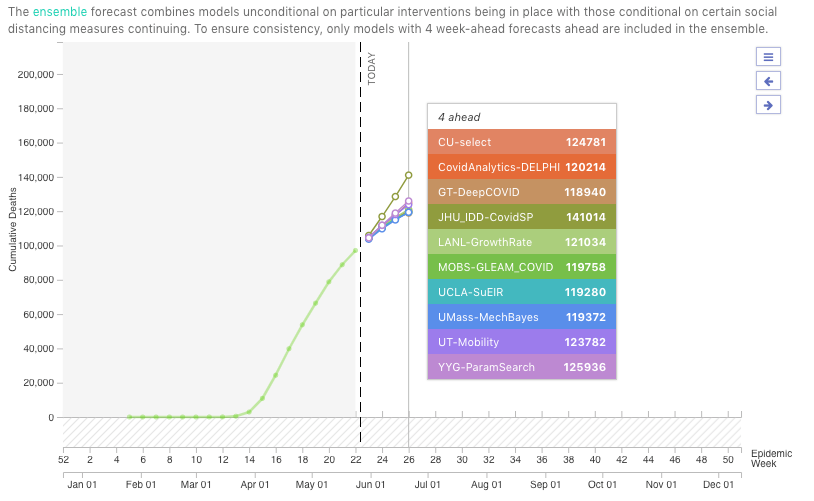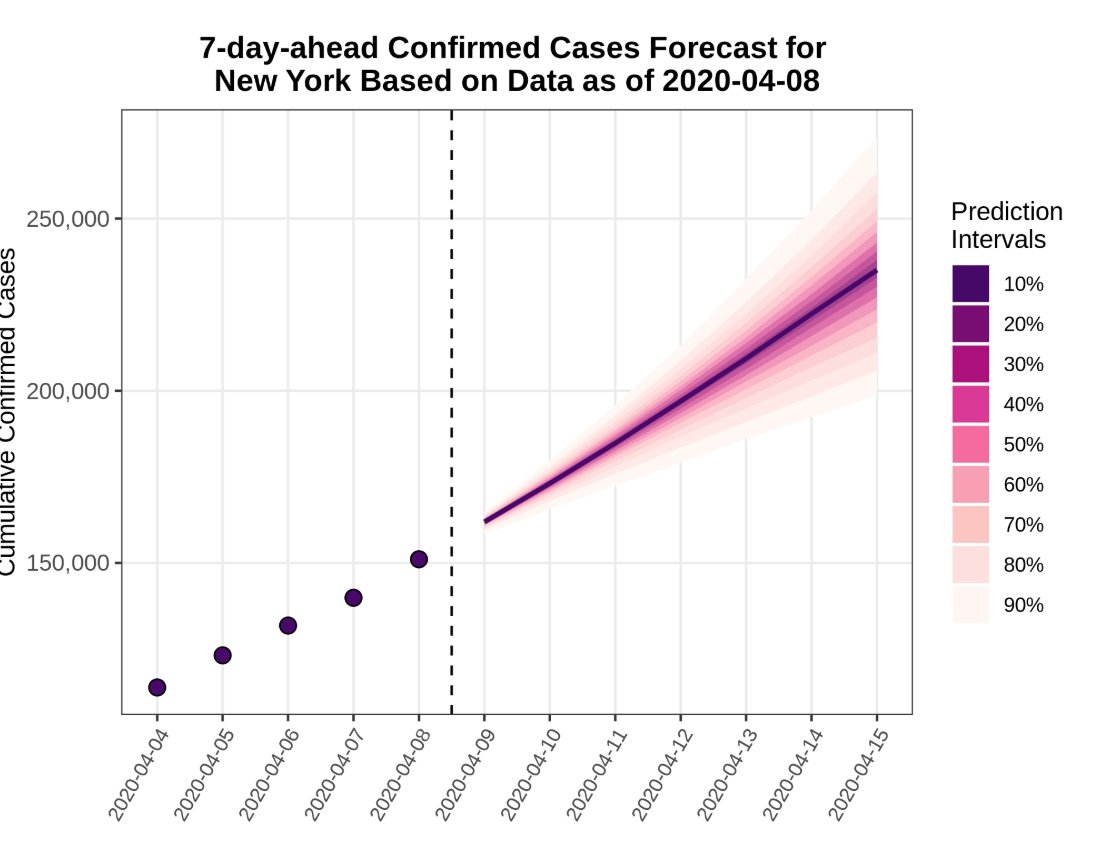
UMass professor, statistician, public health and infectious disease researcher, data scientist, juggler, puzzler, English major. Tweets are my own.
How to get URL link on X (Twitter) App






 The ensemble says that by June 20 there is a 10% chance of seeing fewer than ~117K cumulative #COVID19 deaths in the US and a 10% chance of seeing more than ~130K.
The ensemble says that by June 20 there is a 10% chance of seeing fewer than ~117K cumulative #COVID19 deaths in the US and a 10% chance of seeing more than ~130K. 

 The ensemble model is now 85-90% certain that we will reach 100K #COVID19 reported deaths in the US by May 30.
The ensemble model is now 85-90% certain that we will reach 100K #COVID19 reported deaths in the US by May 30.https://twitter.com/reichlab/status/1257740028635222018


 Interestingly, the long-term forecasts for cumulative #COVID19 deaths show a bit more agreement this week than they have in previous weeks. See below for 7 models' US forecasts for last week and 4 from the previous week.)
Interestingly, the long-term forecasts for cumulative #COVID19 deaths show a bit more agreement this week than they have in previous weeks. See below for 7 models' US forecasts for last week and 4 from the previous week.)


 In general, the message of these models seems to be that #COVID19 is going to continue to exact a large toll in the US, with mortality by late May or early June likely to exceed even the upper-bound estimates of deaths caused by any recent flu season.
In general, the message of these models seems to be that #COVID19 is going to continue to exact a large toll in the US, with mortality by late May or early June likely to exceed even the upper-bound estimates of deaths caused by any recent flu season.

https://twitter.com/cmyeaton/status/1248003777325600770Ensuring that modelers work together to deliver the best data to #COVID19 decision-makers is critical. With this in mind, my group has started to replicate a collaborative framework that has been successful in predicting seasonal flu outbreaks. 2/




https://twitter.com/reichlab/status/1221470740513542144
https://twitter.com/reichlab/status/1241174589079572480

https://twitter.com/reichlab/status/1221176521253146627